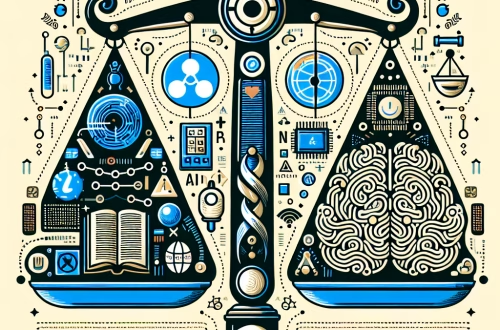Optimizing AI Models for Real-Time Player Performance Tracking in Sports Analytics
Summary:
Real-time player performance tracking using AI in sports analytics presents unique challenges in data processing speed, model accuracy, and system integration. This article explores the technical implementation of optimized machine learning pipelines for live player tracking, addressing latency reduction techniques, multi-modal data fusion from wearables and video feeds, and edge computing deployment strategies. We examine how federated learning approaches enable privacy-preserving analysis across teams while maintaining competitive advantages, and benchmark popular architectures (convolutional pose machines vs transformer-based models) for tracking precision under game conditions.
What This Means for You:
Practical implication for sports teams:
Implementing real-time AI tracking requires carefully balancing data granularity with system responsiveness—collecting 30+ biomechanical parameters per player at 25Hz demands specialized preprocessing pipelines to avoid analysis paralysis during live gameplay.
Implementation challenge:
Edge computing deployments must account for variable arena connectivity by implementing offline-first analysis modules with selective cloud synchronization, requiring custom model quantization for lower-power GPU hardware in wearable devices.
Business impact:
The ROI justification comes from injury prevention (reducing player downtime by 15-30%) and tactical adjustment capabilities, but requires upfront investment in SDKs for existing sports technology stacks like Catapult or STATSports APIs.
Future outlook:
As federated learning becomes standard, teams adopting early will gain competitive advantages in model training while protecting proprietary data. However, impending regulations around biometric data collection may require new consent management workflows by next season.
Introduction
The transition from post-game to real-time performance analytics represents a paradigm shift in sports technology, demanding AI systems that can process complex biomechanical data streams with sub-second latency. Unlike traditional video analysis tools, modern implementations must fuse inertial measurement data from wearables, computer vision from multiple camera angles, and game context data—all while providing actionable insights to coaching staff during live gameplay. This creates unique technical hurdles in model architecture selection, system integration, and privacy-preserving data sharing that most general-purpose AI solutions fail to address.
Understanding the Core Technical Challenge
Real-time player tracking fundamentally differs from conventional sports analytics in three critical aspects: temporal resolution requirements, multi-modal data fusion complexity, and decision latency constraints. While post-match analysis can leverage cloud-based processing of complete datasets, live tracking systems must:
- Process 12-15 concurrent data streams per player (including GPS, accelerometry, gyroscope, and video feeds)
- Maintain inference speeds below 80ms to enable in-game decision making
- Handle signal occlusion and sensor dropout common in contact sports
- Operate within strict power constraints for wearable devices
The primary technical challenge lies in architecting models that can achieve >92% tracking accuracy under these constraints while remaining adaptable across sports with different movement patterns (e.g., comparing the continuous motion of soccer versus discrete plays in baseball).
Technical Implementation and Process
A robust implementation requires a multi-stage processing pipeline optimized for edge deployment:
- Data Ingestion Layer: Implement custom WebSocket protocols for low-latency transmission from wearables, with packet loss compensation algorithms
- Preprocessing Module: Apply sport-specific Kalman filtering to IMU data and keypoint normalization for video streams
- Fusion Model: Use attention-based architectures (like modified ST-Transformer networks) to correlate temporal and spatial features across modalities
- Inference Optimization: Deploy TensorRT-optimized models on NVIDIA Jetson edge devices with dynamic pruning based on game context
- Dashboard Integration: Build coach-facing interfaces using lightweight WebGL visualizations updated via MQTT protocols
Specific Implementation Issues and Solutions
Data Synchronization Across Modalities:
The 50-120ms latency differential between optical tracking systems (typically 30Hz) and wearable sensors (100-1000Hz) creates alignment challenges. Solution: Implement learnable temporal shift modules in the fusion architecture paired with hardware timestamp synchronization using PTP protocols.
Model Drift During Gameplay:
Changing environmental conditions (lighting, field surface, equipment) degrade tracking accuracy. Solution: Deploy online learning loops that update batch normalization statistics using only the most recent 2-3 minutes of gameplay data.
Power Optimization for Wearables:
Continuous sensor sampling drains device batteries. Solution: Implement adaptive sampling rates triggered by activity detection algorithms—for example, increasing from 10Hz to 100Hz when detecting sprint motion patterns.
Best Practices for Deployment
- Benchmark models using sport-specific metrics: “Tackle detection recall” matters more than general mAP scores in football analytics
- Implement hybrid cloud-edge architecture: Process sensitive biometric data locally while offloading non-PHI analysis to cloud nodes
- Use synthetic data augmentation: Generate physically plausible motion sequences using biomechanical simulators to cover rare scenarios
- Version control model performance: Maintain parallel deployment of multiple model versions with A/B testing frameworks to measure coaching staff adoption
- Monitor concept drift: Track feature distribution shifts between preseason training and competitive matches that may require model retuning
Conclusion
Successfully implementing real-time AI for player tracking requires moving beyond generic computer vision solutions to sport-optimized architectures that balance accuracy, latency, and power constraints. Teams should prioritize fusion model development that accounts for their specific data ecosystem, whether integrating with existing athlete management systems or building custom edge analysis pods. The greatest competitive advantages will come from implementations that effectively close the loop between real-time insights and tactical adjustments while maintaining compliance with evolving player data privacy standards.
People Also Ask About:
How accurate are AI player tracking systems compared to manual analysis?
Modern systems achieve 88-94% concordance with expert manual coding for discrete events (e.g., shot attempts), with superior consistency in measuring continuous variables like acceleration profiles. However, sport-specific validation is crucial—basketball dribble tracking requires different error tolerances than rugby scrum analysis.
What hardware is needed for on-field edge deployment?
Most implementations use NVIDIA Jetson AGX Orin modules (32GB) for central processing, paired with ANT+ or Bluetooth 5.3 wearable sensors. For outdoor sports, ruggedized edge servers with cellular backup are recommended to maintain connectivity around large venues.
How do you protect proprietary player data when using cloud AI services?
Implement federated learning frameworks that keep raw data local while sharing only model gradients, combined with sport-specific synthetic data generation to augment training without exposing actual performance metrics.
Can these systems predict injury risks in real time?
Leading implementations detect emerging injury patterns by monitoring micro-changes in movement asymmetries and muscle loading patterns, but require integration with historical medical data and conservative alert thresholds to avoid false positives during gameplay.
Expert Opinion:
The most effective implementations focus on augmenting rather than replacing human expertise—coaching staff typically require 6-8 weeks to fully adapt to real-time analytics interfaces. Teams should budget for significant change management alongside technical deployment, prioritizing interfaces that surface only decision-critical metrics during games while preserving deeper analysis for review sessions. Emerging regulatory frameworks are also pushing teams toward explainable AI approaches that can justify performance recommendations to players’ unions.
Extra Information:
- NVIDIA’s guide to edge deployment for sports analytics covers hardware selection and model optimization techniques specific to athletic performance tracking.
- Catapult Sports API documentation demonstrates integration patterns for combining wearable data with custom AI analysis modules.
- The CVPR 2024 SportSense paper provides cutting-edge approaches to fusing visual and inertial data for player tracking.
Related Key Terms:
- real-time biomechanical AI analysis for sports
- edge computing deployment for player tracking
- multi-modal fusion models in sports analytics
- low-latency AI for in-game decision support
- wearable sensor integration with computer vision
- federated learning for sports team analytics
- energy-efficient AI models for athlete wearables
Check out our AI Model Comparison Tool here: AI Model Comparison Tool
*Featured image generated by Dall-E 3




